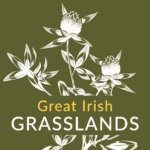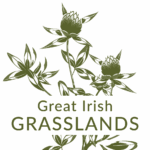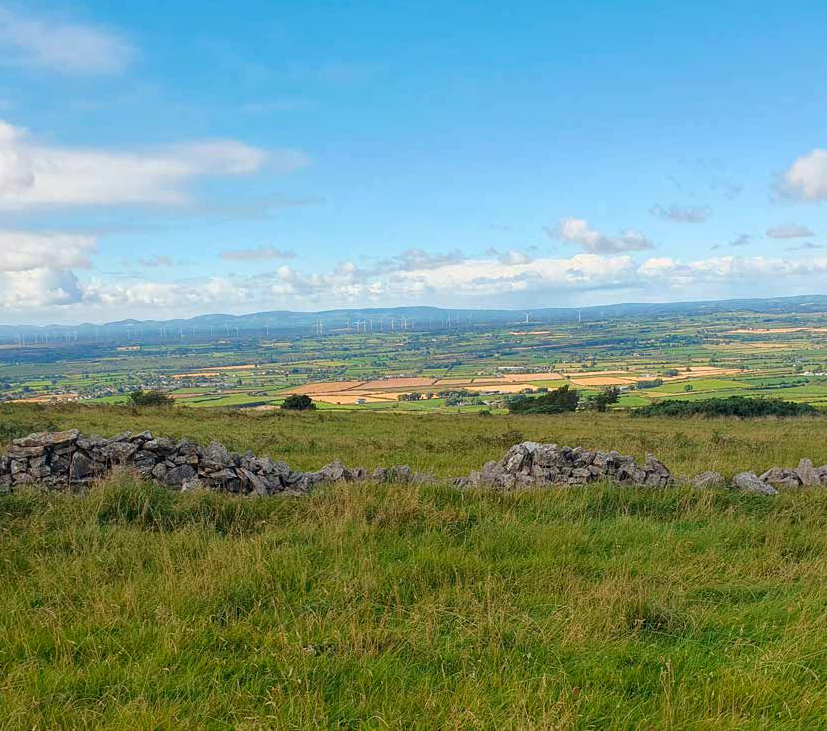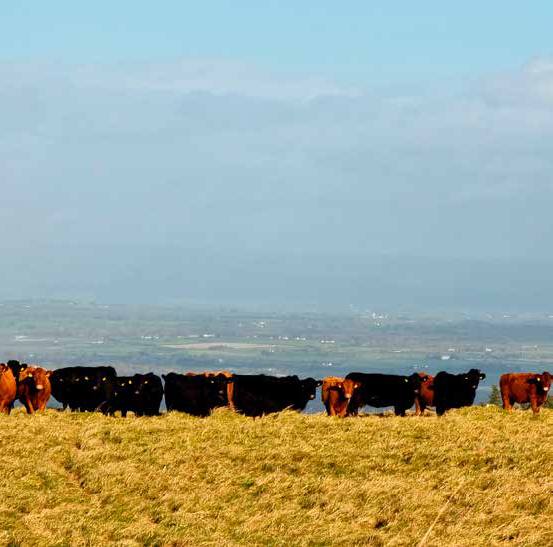This site is rich in floral diversity as a result of winter grazing with cattle on the limestone hill grassland. Exposed small ledges or flat sheets occur and are often weathered into a pavement pattern, similar to that found in the Burren, Co. Clare. After the stock are removed, plants can grow, flower and set seed, resulting in a succession of grasses and wildflowers such as Crested Dog’s-tail, Smooth Meadow-grass, Yellow Oat-grass, Quaking-grass, Wild Thyme, Mouseear-hawkweed, Burnet-saxifrage, eyebright, Fairy Flax and Oxeye Daisy. Rare Green-winged Orchids grow sparingly through this community, along with Frog Orchids and Common Spotted-orchids. Some cliffs occur on the south side of Clomantagh where Southern Polypody is common, along with Hairy Rockcress. Parts of this site are also rich in fungi, particularly waxcaps.
Woodland occurs on the north-western slope, dominated by Hazel and Downy Birch, with a good range of herb species in the ground layer. In seepage areas Opposite-leaved Golden-saxifrage, Bugle and Remote Sedge are characteristic, and there is a little Water Avens, Woodruff and Tufted Hair-grass at the base of the slope. The site also has a population of Marsh Fritillary butterfly, supported by Devil’s-bit Scabious.



